Urbanization of Punta Ballena
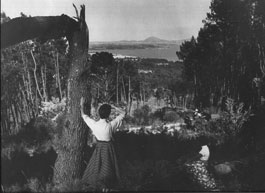
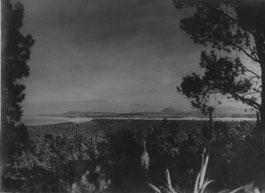
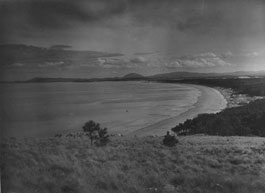
Milka, Elena, Ana and their sisters
Five Argentinean investors were interested in projecting the urbanization of Punta Ballena and proposing it to the daughters of Lussich since they needed to sell their lands, but nothing came to terms until an unexpected encounter between Bonet and Milka (one of Lussich’s daughters). In 1945, during his honey moon in the Hotel Nogaró, Bonet meets Milka Lussich, since she lived there. She was fascinated with Bonet, and convinces herself of the project proposed by the Argentinean investors and decides to accept it. Milka was one of the nine children of don Anotnio (8 women and a deceased boy) and as a consequence one the heiresses of Lussich’s fortune. It is said that the Lussich had financial problems inherited by the way in which Lussich was, and that the way of solving them was to divide and sell the landed property. Bonet appears as the solution: architect that had a good reputation in Buenos Aires. The Milka- Bonet must have been a very shocking encounter. Everyone says that Milka had a very particular personality, and that she must have surely convinced the remaining seven sisters to accept the Bonet plan.
The enormous landed property had been divided in twenty-four parts, and each of the sisters would receive three equal parts along the coast, everything well divided: eight parts in the lagoon, eight in the hill, and another eight in front of the beach- the most valued ones and of higher interest for investment- this way, they all had a portion in each place. A big landed property, then, starts being divided into lots, according to the lay of inheritance in our country, and Bonet picks up this juridical problem and solves it with the module, a module that goes on along the coast through the lots of those sisters who are willing to sell. This is how a character who was a state agent appears, who carries this through. Roque Garcia, was the man who convinced the Lussich sisters one by one that this was the business of a lifetime. This was told by the Bonet widow, Ana Maria, not so long ago in Barcelona. The Lussich sisters sought advice from her, since the relationship between them was difficult..
It is said that Roque Garcia advised her how to handle the situation, in such a way that the negotiation process could be wisely defined in the most pacific way possible. According to him, he told her: “Ana María, Don’t say anything to any of your sisters. Each one is going to come to tell you something about another; you just nod your head. Don’t tell the others what she told you. Don’t open your mouth”, and he was in charge of speaking to the other sisters. This way, the purpose of making the sisters sell their lots was accomplished. They had the need to sell but they all refused to do this, due to the lack of proposed project that measured up to the category of the forest created by their father. The Argentinean investors put Bonet in charge of the fulfil of a project to present to the sisters with the aim of convincing them to sell their lands.
According to Bonet:
In this case I was entrusted with the planning of an area of 1.500 hectares with a basic triangular basic form. The sea constitutes one of the sides, a big lake, the second one and third, the Punta Ballena Sierra. Out of the 1.500 hectares, 1.000 are occupied by a beautiful forest of pines, eucalyptus and other species of great botanic value. This forest, created by Antonio Dionisio Lussich was, together with the beach, the most decisive factor of the project. “I tried to praise it as a unity, in many ways, without distorting it for a geometric division.
“Starting from the middle points of each triangle, I projected in shape of a three-pointed star, a central space that, linked to the three sectors of homes, would allow determining the commercial, collective, social, hotel-wise and sportive services”. As for the three home sectors (one on each side of the triangular ground) were projected according to the topography and surroundings, leaving aside the streets and creating paths that join all the houses with the beach and the woods.
The encounter with cars was carefully avoided and solved by simple footbridges en the few crossings. The fences constitute a plastic element that separated the house from one another, but without dividing the forest.
A studied tree felling allowed the view to the sea, through works that did not ruin the group of the forest landscape. On the area built on the sea, the double circulation makes pedestrians independent and was the first of this kind that did not need the traditional coastal stroll. This stroll was an town-planning element of great charm in the society before the car, transforming later on into a real barrier between the sea and the population.
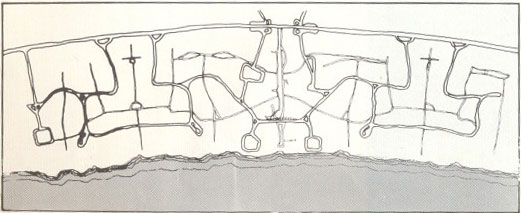
This urbanization is very generous in its lots, lots of a square geometry, and between the houses there are big green spaces and parks left. This was the original division. It can be said that everything worked out so well because except from one lot that was not touched, the whole coast was organized. This lot is currently immaculate, since it belonged to the sister who wouldn’t sell back then and now belongs to the heirs. Obviously, all the sisters have died. The lot possesses 500 mts by 100, along the coast.
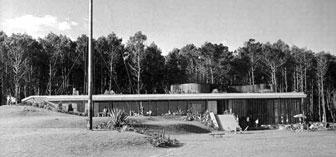 The urbanization and the construction of Solana del Mar “There are key elements, like the road separation in the urbanization: the streets for vehicles and other pedestrian crossings, like those little bridges in Portezuelo, where people did not touch the vehicular. This comes, obviously from the ICMA, the International Congresses of Modern Architecture, but Bonet does not execute these mildly rigid, hard concepts, but he softens and delivers a much more related architecture to the surroundings, to the woods, without stop being modern.
The urbanization and the construction of Solana del Mar “There are key elements, like the road separation in the urbanization: the streets for vehicles and other pedestrian crossings, like those little bridges in Portezuelo, where people did not touch the vehicular. This comes, obviously from the ICMA, the International Congresses of Modern Architecture, but Bonet does not execute these mildly rigid, hard concepts, but he softens and delivers a much more related architecture to the surroundings, to the woods, without stop being modern.
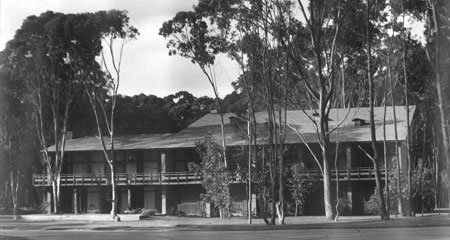 After the urbanization, the construction of the Hotel Terraza del Mar and the sale of the lots take place
After the urbanization, the construction of the Hotel Terraza del Mar and the sale of the lots take place
In this time, after finishing the urbanization and the parador, visitors spent the afternoon and enjoyed the place and its services. Lands were not being sold yet. This is how the conclusion was made that with the construction of a hotel, people could spend more time in the area. This way, the hotel Terraza del Mar is built. It was developed by the French architect Armando D’Ance. The construction of the hotel allowed people to remain in Punta Ballena not just an afternoon but the entire holidays, that back then were one or two months long. This way, the Terraza del Mar Hotel was the one that helped new important projects start to develop./p>
Historic recompilation combined by Ernesto Merzario. Any reproduction must be consulted and accepted according to regulations in force.









